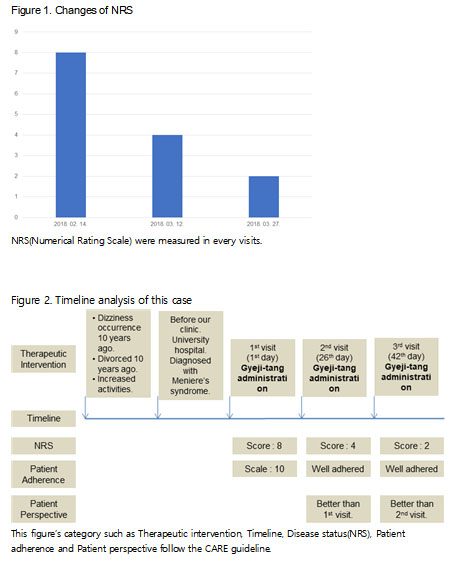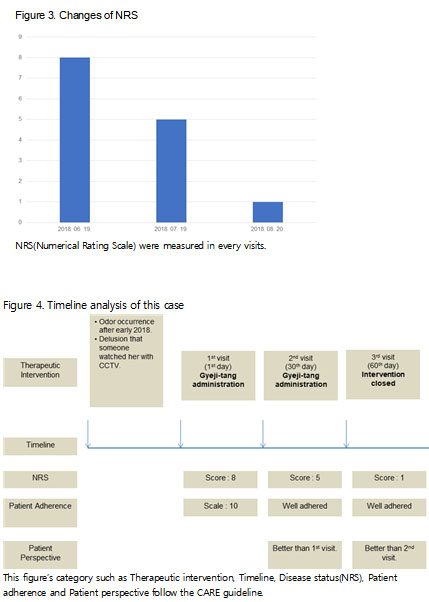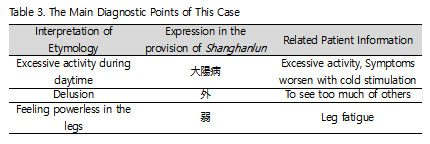Objective : Patients complaining of dizziness and olfactory hallucination who were diagnosed and treated with the Shanghanlun disease pattern identification diagnostic system were analyzed to report cases.
Methods : This is a case report on a patient who has been suffering from Dizziness andolfactory hallucination. According to Diagnostic system based on Shanghanlun provisions, Gyeji-tang was provided. The severity of Dizziness was evaluated by NRS.
Results : When analyzing the patient's history and symptoms, it can be found in article No. 42 in Shanghanlun. In the first case, NRS changed from 8 to 2. In the second case, NRS change 8 to 1.
Conclusions : Gyeji-tang can be effective in dizziness and olfactory hallucination with the Shanghanlun disease pattern identification diagnostic system.
KeyWords : Gyeji-tang, Dizziness, Shanghanlun, Diagnostic System based on Shanghanlun Provisions, Herbal medicine





